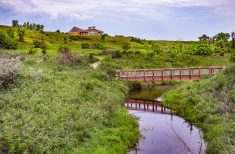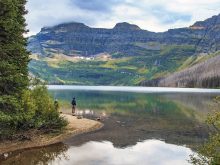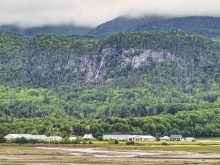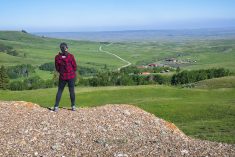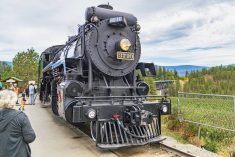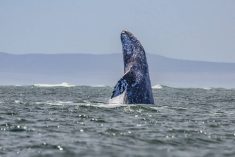We watch from the side of the road as a female wolf gorges herself on an elk that her pack killed the previous night. When she leaves, she is so full of meat that her distended belly drags, making it an effort to walk.
The wolf is likely taking food back to the pups at the den, about three kilometres away, explained a Yellowstone National Park ranger, who described the unfolding drama to curious visitors while trying to keep order among cars stopping along a narrow road.
Read Also

Fuel rebate rule change will affect taxes and AgriStability
The federal government recently announced updates to the fuel rebates that farmers have been receiving since 2019-20.
Almost immediately after the female left, a large grey male showed up. He had a more casual attitude, eating for a bit before resting and occasionally getting up to chase away a bold bald eagle eyeing the tasty-looking carcass.
As in most of the United States, wolves were killed and driven from Yellowstone National Park. With an initial shipment from Canada in the mid-1990s, wolves were reintroduced to the park amid much fanfare and controversy over how this would impact surrounding ranches.
Today, there are an estimated 400 wolves in the greater Yellowstone area, centred mostly in the Lamar Valley in the northeastern part of the park. Seeing these wild and elusive creatures tops the wish list of many park visitors.
There’s also a chance to see black bears, grizzlies, elk, pronghorn, white-tailed and mule deer, bighorn sheep and mountain goats, among other critters.
But the wildlife icon of Yellowstone is undoubtedly the bison. They never completely died out here, although they came precariously close. After years of conservation, the few re-maining animals have multiplied to around 4,600. While we’ve watched bison in other parks, this is a completely different experience because of the sheer number we can see at once. Looking over hundreds of bison dotting the broad grasslands of the Lamar Valley is like a glimpse into our pre-settlement past.
Yellowstone’s appeal is a combination of wildlife, stunning mountain scenery and unique thermal features.
Gazing over the Grand Canyon of the Yellowstone alone makes the trip worthwhile. Precipitous multi-coloured slopes frame impressive waterfalls, one of which is almost twice the height of Niagara.
Yellowstone’s main purpose is to protect half of the world’s hydrothermal features, the myriad of spewing geysers, steaming fumaroles, boiling mudpots and kaleidoscopic pools.
Old Faithful is the most famous geyser by far, shooting boiling water 40 metres into the air every 60 to 90 minutes or so. Staff can predict eruptions at a surprising number of other geysers with reasonable accuracy.
What impresses us most are the colours of the thermal pools, from unreal baby blues to deep green, florescent orange and often a hodge-podge of every imaginable shade.
Our favourite is Morning Glory Pool, a short hike from Old Faithful, where it seems that a gigantic blood-shot eye peers out from the centre of the Earth.
Other must-sees include Grand Prismatic Spring, the largest hot spring in the park at more than 110 metres in diameter and about 35 metres deep, and the Black Pool, which was once a much darker shade than its current azure blue.
Since this area is in a constant state of flux, colours, shapes and temperatures of many features change with the Earth’s rhythms.
Since Yellowstone is immensely popular, be prepared for lots of people and traffic throughout the short summer season.
During our early June visit, every campground was filled every day, usually well before noon. Roughly half of the camp sites can be reserved and are often completely booked well in advance. The other half are first come, first serve.
To secure a site in another campground in a different part of the park, we had to arrive first thing in the morning.
For more details, see the park website at www.nps.gov/yell.
Arlene and Robin Karpan are well-travelled writers based in Saskatoon. Contact: travel@producer.com.




